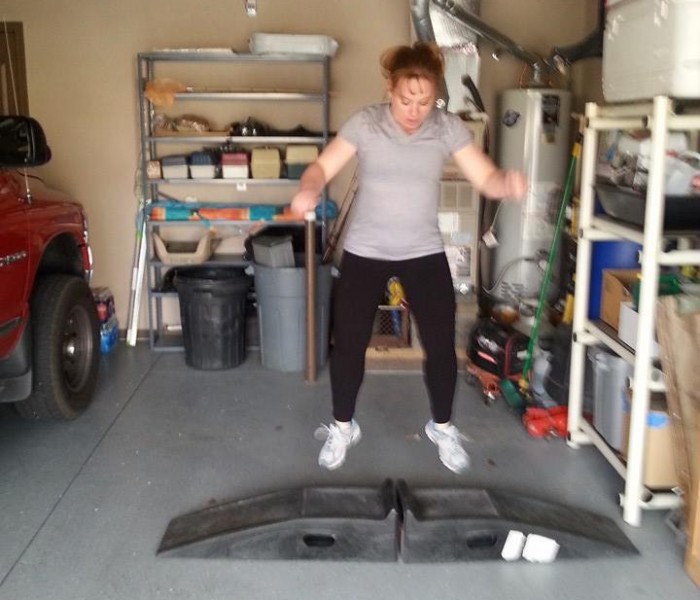This
post was originally published on
this sitehttp://www.marksdailyapple.com/
 June looms. Summer is almost upon us. The sun’s out, people are starting to gather and mingle, the big box stores are stocking charcoal again, and those chicken drumsticks, that tri tip, that lamb leg, and that salmon filet behind the butcher counter are looking good. You feel the pull of the grill. It calls to you. You need to respond—but how to do it?
June looms. Summer is almost upon us. The sun’s out, people are starting to gather and mingle, the big box stores are stocking charcoal again, and those chicken drumsticks, that tri tip, that lamb leg, and that salmon filet behind the butcher counter are looking good. You feel the pull of the grill. It calls to you. You need to respond—but how to do it?
Not everyone is a grill master. With baking and traditional recipes, you can follow along just by reading. Oven temperatures and controlled gas ranges make cooking indoors fairly predictable. But outside, out on the grill, things get a little wild.
Grilling is more art than science. It’s about feeling the meat, sensing the heat, intuiting what’s happening beneath and above the grill. The wind, the coals, the flame, the air flow, the ambient temperature all affect and determine the quality of the finished product. It’s all too much to plug into a spreadsheet and figure out down to the millisecond. There are no guarantees. So while I’m going to give you the best methods I’ve learned over the years, don’t take this as settled science. You’re going to have to experiment for yourself.
Today I’ll go over the most frequently asked questions I see about grilling.
How to Determine the Proper Grill Temperature
When you grill, you want areas of high, medium, and low heat accessible at all times. This gives you the ability to modulate the amount of heat your food receives and it gives you more flexibility when cooking. Whether you’re using coals or gas, you can determine the temperature ranges by using feel—actually feeling the heat with your hands. If you can keep your hand a couple inches off the grill only for under a second before it gets too hot, that’s high heat. If you can keep your hand there for 2 seconds, that’s medium heat. If you can keep your hand there for 3-5 seconds, that’s low heat.
How to Determine Meat Doneness
You can use an instant read digital thermometer inserted into the thickest part of whatever you’re grilling. This is more precise and it’s a good way to develop your intuition if you pair it with learning by feel. This is a good one that’s served me well.
- Rare: In a chef’s mind, rare means very pink, is closer to 125 degrees
- Medium-rare: You’re looking for 125-130 degrees
- Medium: 130-135 degrees
- Medium-well: 135 to 140 degrees
- Well done: 140 and above
You can also determine doneness by touching your meat, by prodding it, by poking it, by squeezing it. With enough time and trial by error (and using the thermometer to confirm), you can eventually figure out if the meat is ready by how it responds to your manual manipulation, but in general:
Rare is squishy.
Medium-rare is spongy.
Medium-well is firm.
Whatever you do, err on the side of taking it off the heat early. You can always add more cooking time if it’s undercooked, but you can’t take it away.
How to Grill Burgers

Some people like to complicate the burger. They include exotic spices, incorporate cheese or grilled onions into the meat itself, and pre-form them. For my money, the best way to grill a burger is to pack about 1/4-1/2 pound burger meat loosely together right before you throw them on the grill—packed enough that it stays together but not so tight that it becomes a brick. Don’t mix salt into the burger meat, because that will alter the structure of the meat and give it a sausage texture.
Recipe to Try: Cowboy Burgers

Fun fact: Primal Kitchen® just updated the Ranch Dressing recipe, adding organic egg yolks, a natural emulsifier, for a thicker, creamier dressing that’s still dairy-free.
How Long to Grill Burgers
Season it heavily with kosher salt and black pepper on both sides and grill over medium-high heat for 1-2 minutes per side. Then flip again and grill for 1 minute on each side, turning the burger 90 degrees so you get grill cross marks. Move burger off to the side to finish cooking on indirect or low heat for another few minutes, adding cheese to melt at this point if you are so inclined.
How to Grill Thick Steak
To grill a thick steak like a ribeye, a NY strip, a porterhouse, or a filet mignon, you’ll need to use a combination of high heat and low heat. First, season all sides, including the edges, with kosher salt and pepper. Be generous. Then, rub a little olive or avocado oil all over the meat and place on a pre-heated grill over high heat for 2 minutes. Flip and grill another 2 minutes. Flip again, turning the meat 90 degrees to get the hash grill marks. Flip again after a minute, again turning the meat to get the hash marks. After a minute, move the steak off the coals/flame to cook indirectly for another 2-4 minutes with the cover on, flipping midway through and making sure any fat caps are pointed toward the heat source. Gotta render that down.
Adjust time depending on thickness, of course. These are just guidelines and ranges.
If you prefer, you can begin with indirect heat and finish with high heat. Both work great.
You can also smear Primal Kitchen mayo all over your salted-and-peppered steak instead of oil before applying high heat. Gives a great crust.
After it’s off the grill, let it rest for 10 minutes before slicing into it. And always slice against the grain.
How to Grill Thin Steak
To grill a thinner steak like skirt, flap, flat iron, hanger, or flank, you’ll want to stick to medium-high heat. Add kosher salt and pepper and any other seasonings you want (or marinade 12-24 hours before, as thinner steaks do great with marinades), spray or drizzle olive or avocado oil, and toss it on the grill over medium high heat for 2-3 minutes per side. Place on indirect or low heat to finish.
Make sure you let the steak rest for 5 minutes and cut against the grain.
How to Grill Salmon

Season your salmon on both sides, spray it down or drizzle with olive or avocado oil, and place it skin-side down on a heated grill over medium heat for 3-5 minutes. When the meat-side facing up begins to dry out and you can see the cooked portion of the meat inch up along the side toward the midpoint of the filet, flip it over and grill for another 2 minutes. Move off the heat to finish indirectly.
I can’t recommend grilling salmon directly on the grill without the skin because it always sticks to the grill. I’ve never found a good replacement. What you can do is place the salmon on a cedar plank and cook it for 20-30 minutes. This is a slower, gentler cook.
How Long to Grill Salmon
Because salmon is so varied in thickness and fat content, it’s hard to give one number that encompasses every piece of salmon. What works best is what not to do. If you get the white stuff forming on the meat, you’ve gone too long. Take it off before the white stuff happens.
How to Grill Chicken Breast
To grill chicken breast, season it well, drizzle it with olive oil, and grill it until well-browned on all sides (about 3 minutes per side), then move to indirect heat, cover the grill, and let it cook until done.
An alternative method is to smash the chicken breast flat with a meat mallet, season it, and grill it over medium high heat for 10 minutes. Much quicker this way.
Recipe to try: Devyn’s Grilled Marinated Chicken
How Long to Grill Chicken Breast
Confirm that it’s done with a digital thermometer or by feel (if you’re confident in your intuition). Conventional wisdom says chicken breast must reach 165°F to be safe, but you can take it off at 157° and let it rest for 10 minutes. Residual heat will cause the internal temp to rise to a safe level and you won’t dry out your breasts.
Bone-in breast will take longer to cook, but it will also be juicier since the bone protects the meat from drying out.
How to Grill Chicken Thighs

Chicken thighs are more forgiving than chicken breast. All that collagen and connective tissue and fat keep the meat moist, even at higher temperatures and longer cooking times. But if you want to realize the thigh’s potential and enjoy mouth-watering, unctuous meat ribboned with melting collagen, you need to cook it long enough to break down all that connective tissue.
How Long to Grill Chicken Thighs
A chicken thigh can get by with just salt and pepper—or maybe a citrus-based marinade. Medium heat is ideal, about 8 minutes per side, and then another 5-8 minutes over indirect heat. As long as you keep it from burning, it will stay moist and juicy.
How to Grill Whole Chicken
To grill a whole chicken, you have to spatchcock the bird: remove the back bone, lay the bird out flat, and press down hard on the breasts until you hear a pop. Then season it with kosher salt and pepper (and other spices, if you desire, like paprika, garlic, and turmeric) all over, rub some avocado oil on, and place it skin side up on the grill. If you’re cooking with charcoal, pile up the charcoal over to one side and put the bird on the opposite end with the drumsticks closest to the coals. If you’re cooking with gas, leave half of the grill unlit and fire up the other half, putting the bird on the unlit half with its legs pointing toward the flames. Cover.
After about an hour, check the chicken. Grab the drumsticks and jiggle the legs. If they’re breaking free and the juice runs clear, the connective tissue has broken down and you’re almost done. Take the chicken and flip it over, skin side down, directly over the coals, for 5 minutes. Then it’s done.
How to Grill Pork Chops
The pork chop is an underrated cut. Even by me. I always forget to get pork chops, they always slip my mind, but I’m always happy when I do remember. Some salt, some pepper, some avocado oil, medium high heat, time is all you need for a great grilled pork chop. The charred fat cap is really tough to beat.
I treat grilled pork chops like steak. I sear for two minutes, flip and sear for two minutes, flip (turning 90 degrees to get the good grill marks) and sear for 1 minute, flip (turning 90 degrees) and sear for 1 minute. Then move off to the side to finish cooking over indirect heat.
How Long to Grill Pork Chops
With pork, you want to use a thermometer to determine how long to grill it. If I’m eating quality pork, ideally pasture-raised, I’ll serve it medium. That means I pull it at 130-135° and then letting it continue warming up a bit more. There will be a light pink tinge running through the meat and plenty of juice.
How to Grill Ribs
You can’t really grill baby back or spare ribs from start to finish like steaks if you’re looking for that fall-off-the-bone texture. It takes a long time. You need to start with indirect low heat for 2 to 2 and a half hours. Season your ribs, paint them with sauce if you prefer, place bone side down on the grill, cover the grill, and cook them on low until they slide off the bone easily.
Another way to do it is to pre-cook your ribs in the oven, on the stove, or in the pressure cooker. Use a mixture of water, broth, vinegar, and sauce and various other seasonings and braise/boil/pressure cook the ribs until they’re tender. Refrigerate them until you’re ready to grill, then add more sauce to the ribs and quickly grill them over medium high heat on both sides until warmed through and seared.
These methods work for beef ribs, too, but you’ll need more time to get them tender.
How to Grill Shrimp
Shrimp grill up real quick—almost too quick. If you grill them long enough to develop the Maillard reaction, they often overcook and turn rubbery. Here’s how you overcome it:
- Grill with the shells on. The shells protect the meat from overcooking and impart extra flavor to the finished dish. I love shell-on shrimp and actually eat the shells if they’re cooked well; they actually provide prebiotic “fiber.”
- Instead of spacing the shrimp out, pack them close together on the skewer. This protects the meat from drying out.
- Choose the largest shrimp you can find. The larger they are, the more heat they can handle before drying out.
- Grill over high heat, 2-3 minutes per side (depending on size).
Finish with salt and lemon juice.
How to Grill Asparagus

Trim your asparagus and toss it in a large bowl with olive oil, salt, and pepper until completely coated. Place on the grill perpendicular to the grates over medium heat. When you see grill lines form, roll the asparagus 90 degrees. Continue this until there are prominent grill lines encircling the entire stalk of asparagus. Remove from heat and squeeze half a lemon over the asparagus. Serve with lemon juice whisked into mayo on the side for dipping.
While this isn’t an exhaustive list of everything there is to grill, it covers just about all the things you’ll want to grill on a regular basis. Leave me your thoughts down below and let me know what you love to grill and how to do it.
Take care, everyone.
The post How to Grill Everything – the Ultimate Guide appeared first on Mark’s Daily Apple.



 John asked:
John asked: I know meditation is good for me, but I don’t know how to start.
I know meditation is good for me, but I don’t know how to start.
 June looms. Summer is almost upon us. The sun’s out, people are starting to gather and mingle, the big box stores are stocking charcoal again, and those chicken drumsticks, that tri tip, that lamb leg, and that salmon filet behind the butcher counter are looking good. You feel the pull of the grill. It calls to you. You need to respond—but how to do it?
June looms. Summer is almost upon us. The sun’s out, people are starting to gather and mingle, the big box stores are stocking charcoal again, and those chicken drumsticks, that tri tip, that lamb leg, and that salmon filet behind the butcher counter are looking good. You feel the pull of the grill. It calls to you. You need to respond—but how to do it?





 The beauty of microworkouts is that you can do them virtually anywhere with minimal time investment, and the cumulative training effect really adds up… if you remember to do them.
The beauty of microworkouts is that you can do them virtually anywhere with minimal time investment, and the cumulative training effect really adds up… if you remember to do them.

 Crisp and caramelized on the outside, but never burnt. A first bite that melts in your mouth as the savory, perfectly seasoned flavor of beef hits your palate. The rich, smoky aroma of animal fat dripping onto an open fire.
Crisp and caramelized on the outside, but never burnt. A first bite that melts in your mouth as the savory, perfectly seasoned flavor of beef hits your palate. The rich, smoky aroma of animal fat dripping onto an open fire. Rib steaks are basically a prime rib roast cut into portions, with or without the bone.
Rib steaks are basically a prime rib roast cut into portions, with or without the bone.




 The most common method is searing the steak first on the stove, then finishing it in a hot oven.
The most common method is searing the steak first on the stove, then finishing it in a hot oven. A small but vocal population of steak lovers swears by the “reverse sear” technique. The theory behind this method is that cooking the steak in the oven first will dry the outside of the steak while slowly cooking the inside and keeping it tender. If the outside of the steak is dry, it will then sear faster and more efficiently in a hot pan.
A small but vocal population of steak lovers swears by the “reverse sear” technique. The theory behind this method is that cooking the steak in the oven first will dry the outside of the steak while slowly cooking the inside and keeping it tender. If the outside of the steak is dry, it will then sear faster and more efficiently in a hot pan.


 Research of the Week
Research of the Week


 For now classes are 6pm and 640pm at 2840 Wildwood st in the Boise Cloggers studio.
Book your class NOW!
click this ==>
For now classes are 6pm and 640pm at 2840 Wildwood st in the Boise Cloggers studio.
Book your class NOW!
click this ==>








